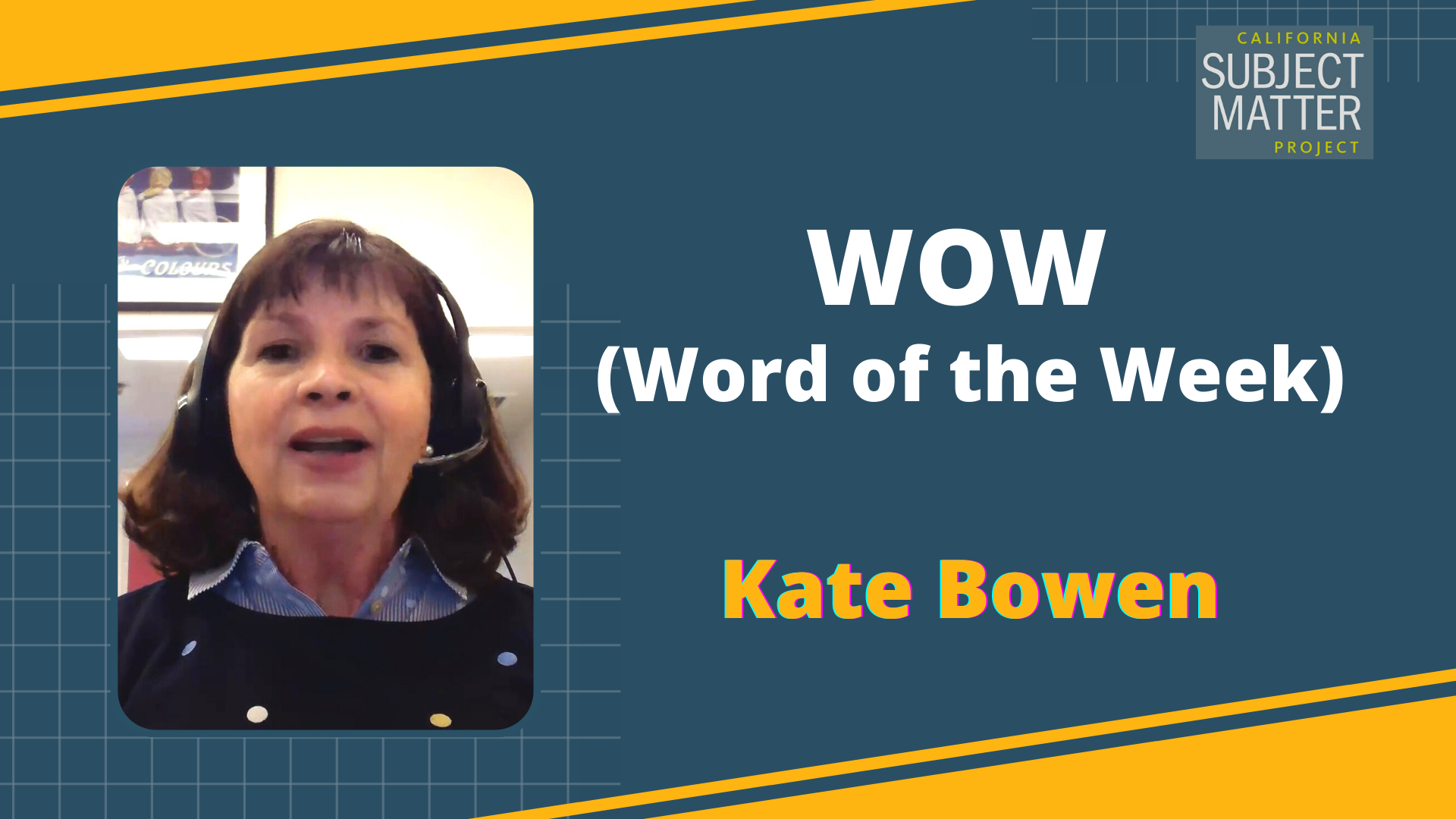Watch the Video
Presenter
Celia De La Loza, transitional kinder through fifth grade teacher at Valencia Academy of the Arts and also a teacher leader for UC Irvine Science Project, a regional site for the California Science Project.
Transcript
I’m Celia De La Loza and I teach transitional kinder through fifth grade at Valencia Academy of the Arts. I’m also a teacher leader for UC Irvine Science Project, a regional site for the California Science Project. Today, I want to share with you an effective strategy for checking students’ understanding after you have given a lesson.
You can use this strategy across the disciplines and it’s best for elementary students. It’s commonly known as the “Fist to Five”, but I prefer a modified version of it, the “Fist to Three”. When you use the Fist to Three, you’re able to gauge how effective your lesson was and what your next moves will be.
Let me show you how it’s done. When you finish a lesson, you restate your lessons objective, and then you ask students to put their fist on their chest. We do this to promote anonymity. The other students can’t see what you’re going to communicate with the teacher from the side, nor from the back. You can also ask students to close their eyes, to promote anonymity.
Then you ask the students to think how well they understood the lesson’s objective. And then you’re going to ask them to put one finger up if they did not understand the lesson’s objective and they feel that they need a lot more practice. They can choose to put two fingers up if they feel that they were understanding the lesson’s objective, but prefer one more practice or just a little bit more practice. They can choose to put three fingers up, if they understood the lesson’s objective, they can do it independently and they can teach others.
When I first introduce this strategy, I like to use visual representations. For lower grades, I like to quickly sketch a butterflies egg, a caterpillar and a butterfly on the board. And I’ll say: now think, did you feel like a butterfly egg, like you are barely beginning? Then you put a one. If you feel like a caterpillar, like you’re growing, you just need a little bit more practice, then you put a two. Or do you feel like a butterfly? You can do it independently, you’ve mastered it, you can soar like a butterfly, then you put a three.
Now for upper grades, I use different ones. I use amateur. You’re a beginner. You still need to watch others and you need to practice a lot, then you put a one, but if you’re feeling like an apprentice, you think that you’re kind of understanding the lesson, but you need more training, then you put it two. Or if you feel that you really understood this and you’re feeling like an expert, you can do it independently and you can teach others, then you put up a three.
This strategy not only gets you information about the students’ self-reflection about his level of understanding, but it gives you an opportunity to quickly scan the room and notice your ones and your twos.
And from that number, you make a determination whether your next move might be reteaching the lesson using a different modality. And then you also take note of your threes because the students that have mastered it and feel confident and can do it independently may be the students that serve as peer tutors when you give a reteach lesson again.
So before I end, I just want to summarize the Fist to Three strategy. It’s an effective way to get information about your students’ level of understanding after you’ve given a lesson. You’re asking students to communicate using finger signals and you’re quickly scanning how many students showed a one, how many students showed a two, that will help you determine your next move and maybe your next move might be to reteach the lesson. You’re also noting how many students are self-evaluating as a three and those students will serve as your peer tutors the next time you reteach the lesson.



